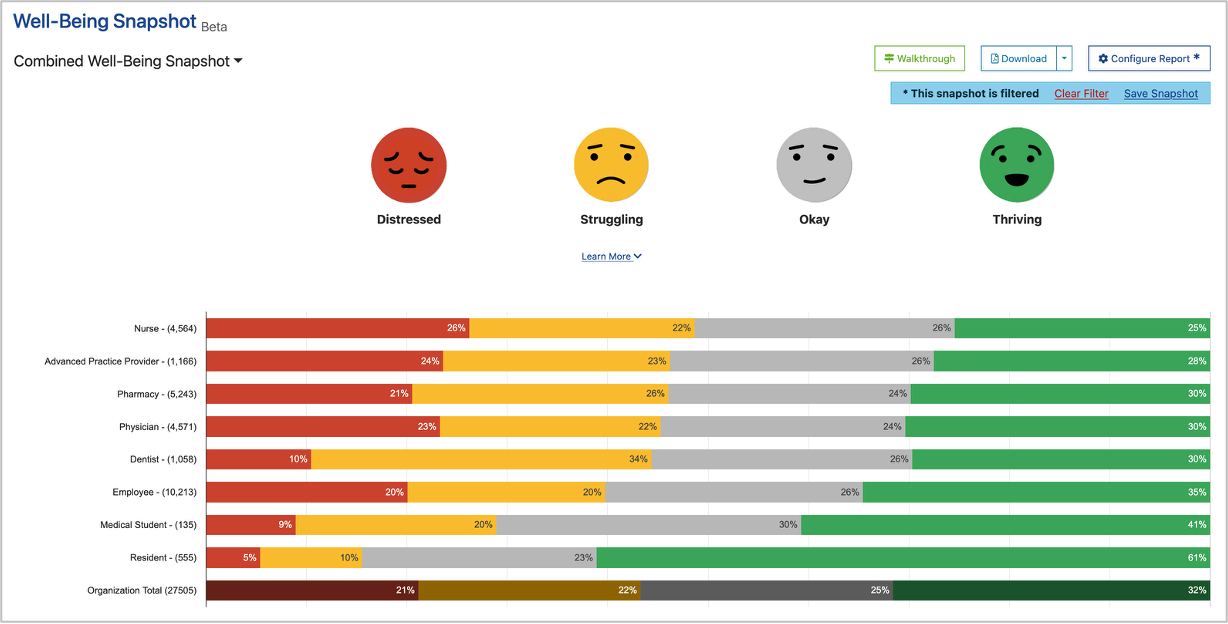Employee burnout is a problem that affects people working in organizations of all sizes. In a mid-sized or large business, it can be difficult to spot the early warning signs of employee burnout, which means that the condition can progress to the point where it is seriously affecting productivity in your organization. To protect your employees and keep your business running smoothly, look out for these telltale signs of burnout in your workforce.
To identify the signs of employee burnout, it’s helpful to understand the conditions in which employees are likely to succumb to burnout. These conditions can consist of (but are not limited to) employees…
- Expecting too much of themselves
- Not receiving affirmation for their work
- Feeling inadequate or incompetent
- Having unreasonable demands put upon them
- Being in a role that’s not a good fit
If you’re seeing any of these situations unfold at your organization, you will want to look out for the following burnout symptoms, and take a positive course of action immediately.
1. Exhaustion
If your employees complain about feeling exhausted all the time, they could be experiencing burnout. An overload of stress at work can make it impossible for employees to relax at the end of the day or sleep well, which leads to a constant state of fatigue.
Once sleep deprivation arises, an employee’s complaints can range from simple sleepiness, to more serious side effects like hallucinations, trouble recalling memories, and physical pain. If exhaustion is allowed to advance, long-term health risks like obesity can result. If your employees are grumbling about not getting enough sleep, it would be advised for you to look into combatting burnout symptoms.
2. Mistakes
One of the key signs of burnout is the inability to concentrate or remember important things. If your employees are constantly making mistakes or forgetting about important meetings or deadlines, you need to investigate the reasons behind their lack of attention.
Take a supportive approach to finding out what the problem is, such as inviting the affected employees to a group meeting where they can talk about their experience of work and explain which aspects of their job are stressing them out. You can then help them seek the help they need to combat burnout.
Reassuring your employees that they won’t be reprimanded if they express feelings of burnout is essential to creating a successful wellness program. If your employees are worried they may be written up or fired for discussing burnout symptoms, the side effects and mistakes will only progress, taking a major toll on your organization.
3. Sickness
When a person’s energy reserves are depleted, that person is more likely to be vulnerable to colds and other viruses. Pay attention to the number of sick days employees are taking to see which ones could be burned out. People who succumb to every virus going around may be suffering from depressed immune activity due to burnout.
When employees are continually calling in sick, an organization’s productivity – and eventually reputation – are at stake.
4. Depression
Employee burnout often leads to depression, which can manifest in the workplace as a lack of confidence, acting withdrawn, and excessive worrying about deadlines. Signs of fatigue are frequently seen when an individual is suffering from depression.
If you have an employee dealing with depression due to burnout, you will likely see a decrease in passion for their work. Overeating or appetite loss may also become apparent in a depressed individual.
Signs of work-related depression should be taken seriously, but also addressed with utmost sensitivity. Facilitating a safe and understanding environment for employees to express their needs is key to combatting depression from burnout. Encourage employees to talk about their feelings so you can assist them in receiving help.
5. Irritability
Tensions in the workplace can simply be the result of a clash of personalities, but if an employee is suddenly unable to get along with anyone, it could be a sign that person is under a lot of pressure. Irritability could also be the result of an individual feeling ineffective, unimportant, or less efficient than they once were.
In addition to standard workplace disciplinary procedures for employees who show excessive anger or even violence toward their co-workers, consider whether you can help to resolve the underlying cause of the anger by taking action to address employee burnout. If left unaddressed, irritability can ruin relationships and careers.
6. Cynicism
Watch out for a cynical attitude developing in your workplace. This is a key sign of employee burnout, as it suggests that a worker’s passion for the job has been exhausted. Cynicism will also affect an individual’s trust in their coworkers or leadership.Productivity levels can suffer greatly if there is a significant case of cynicism in your organization’s culture. Moreover, if employees are unhappy with how they’re being treated, it’s inevitable that the news of your company’s faults will travel quickly.
Having transparent processes can help to build employee trust and improve loyalty for the organization. In some cases, changing the employee’s working routine to reduce burnout can help to reignite that person’s enthusiasm for the role and make the cynical attitude a thing of the past.
Could your employees be suffering from burnout? If you’re not sure whether the signs you’re seeing point to employee burnout or another workplace problem, why not use the Well-Being Index to assess employee well-being and monitor wellness in your workplace? This free tool can help to spot the very earliest signs of employee burnout so you can take action quickly to address the problem and prevent it from getting worse. In this way, you can help your employees to keep performing at their best and promote a healthy and happy workplace culture.







